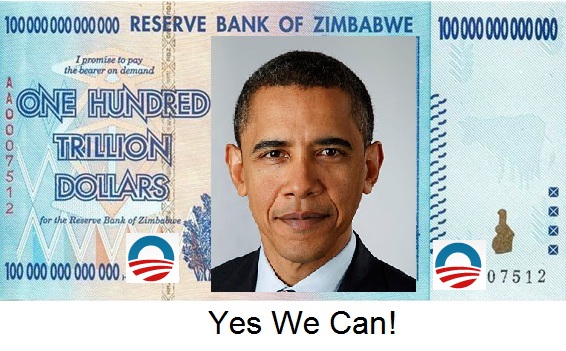 Fed Chairman Yellen’s less than sparkling performance before the Senate Banking, Housing and Urban Affairs Committee on Thursday constitutes a complete affirmation for continued purchases of gold and silver. The Chairman’s testimony was so disjointed that two major news organizations published completely contradictory headlines of her stuttering remarks.
Fed Chairman Yellen’s less than sparkling performance before the Senate Banking, Housing and Urban Affairs Committee on Thursday constitutes a complete affirmation for continued purchases of gold and silver. The Chairman’s testimony was so disjointed that two major news organizations published completely contradictory headlines of her stuttering remarks.
Tapering – will she or won’t she was the question on everyone’s mind regarding future actions of the Fed and here’s the yes and no answer to the big question based on Yellen’s testimony.
The Wall Street Journal reported that Yellen Says Rethinking Bond Pullback is Possible.
Federal Reserve Chairwoman Janet Yellen said she isn’t sure how much of the recent deterioration in U.S. economic growth is due to weather, adding the central bank might consider a pause in its reduction of bond buying if the weakness persists.
“Asset purchases are not on a preset course, so if there’s a significant change in the outlook certainly we would be open to reconsidering, but I wouldn’t want to jump to conclusions here,” Ms. Yellen told the Senate Banking Committee Thursday.
“A number of data releases have pointed to softer spending than analysts had expected,” Ms. Yellen said. “That may reflect in part adverse weather conditions, but at this point it is difficult to discern exactly how much.”
Since Feb. 13, U.S. economic data has shown signs of weakness. The softness has been broad-based, with retail sales falling 0.4% and industrial production sliding 0.3% in January. The recovery in housing, a crucial gauge for the success of Fed policies, has also shown signs of fraying. Some economists have blamed harsh winter weather for the slowdown.
Meanwhile, Yellen’s remarks were viewed in a different light by a Bloomberg headline stating that Yellen Repeats Fed Likely to Keep Trimming Asset Purchases.
Federal Reserve Chair Janet Yellen said the central bank is likely to keep trimming asset purchases, even as policy makers monitor data to determine if recent weakness in the economy is temporary.
Yellen repeated the Fed’s statements that the central bank intends to reduce asset purchases at a measured pace, and she said in response to a separate question that the bond-buying program was likely to end in the fall.
Does Yellen have a dissociative identity disorder (DID), commonly referred to as a multiple personality disorder? According to Wikepedia, DID is characterized by two identities or dissociated personalities that alternately control a person’s behavior. The disorder is a controversial subject in the field of psychiatry and there is no consensus regarding either diagnosis or treatment so we can give Yellen a pass of this one.
Here’s the facts we do know about Yellen and Fed policies and they all represent some of the best reasons for increased ownership of both gold and silver.

The Fed stands ready to increase its $4 trillion balance sheet at the slightest sign of weakness in the stock market or the economy despite the lack of conclusive evidence that their money printing spree has helped the real economy.
The money surging out of the Fed has created multiple asset bubbles which will eventually pop, prompting further asset purchases with printed money to contain the damage and the cycle stays on auto repeat until the entire empire of debt and printed money completely collapse.
The Fed is firmly committed to an annual inflation target of at least two per cent to combat the threat of deflation. The Fed is terrified of deflation since it increases the value of money and decreases the ability of borrowers to service their debt burdens relative to income. Deflation would make it difficult and eventually impossible for governments to continue borrowing to stay current on their mountains of debt and entitlement obligations.
Inflating away the debt is the Fed’s solution for keeping U.S.A. Inc. in business. The Fed’s inflation targeting will help the U.S. government from being overwhelmed by debt but long term it guarantees that the future purchasing power of the dollar will continue its relentless decline and the downward spiral in real inflation adjusted wages will continue.
There will be a “next recession” and when it comes the Fed’s only option is money printing since short term rates are already at zero.

Yellen has acknowledged that she has a soft spot in her heart for the unemployed. The Fed’s conflicting mission of ensuring a stable value of the dollar and promoting employment has morphed into a full blown effort to create economic wealth and jobs through higher inflation and printed money.
Courtesy: zerohedge
The monetarist fools at the Fed, lead by Yellen, seem fully committed to solving every economic problem with more monetary printing. This policy may keep the wheels from falling off in the short term but guarantee disastrous long term results. Bernanke had his critics but Yellen seems like a novice by comparison – maybe she should grow a beard.

